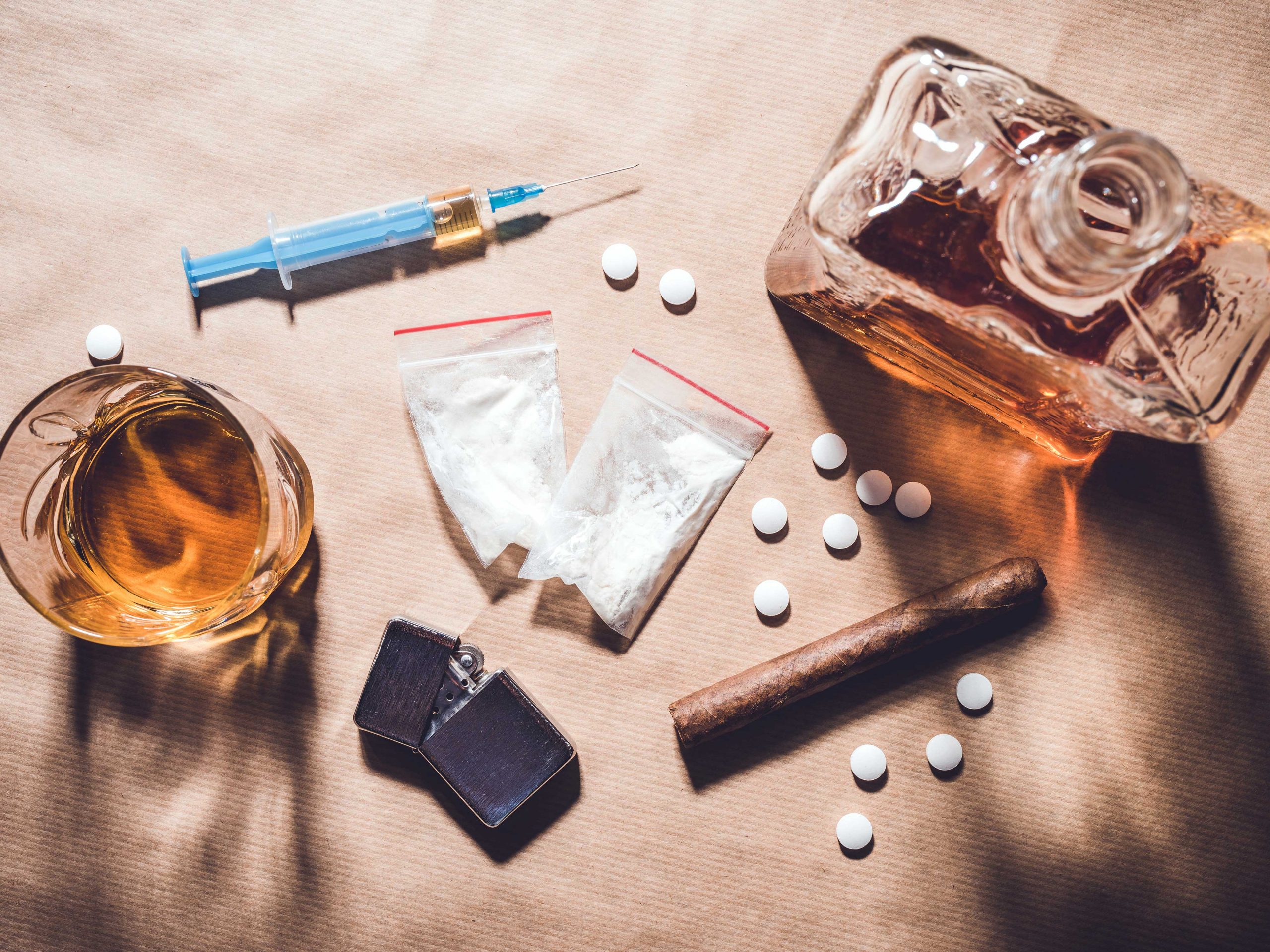The ingredients used to make methamphetamine in clandestine laboratories are often household products that can be purchased at any local grocery store. Although these products may present little danger individually, when combined, they can be used to create a toxic and addictive drug and even have explosive effects. If you ever came across a meth lab, would you recognize it? If you’re not sure, below are some signs your neighbor is cooking drugs like meth.
What Are the Ingredients in Meth?
Methamphetamine, also known as meth or crystal meth, is an addictive central nervous system stimulant that’s illegally manufactured, trafficked, and used for recreational purposes. It acts on neurotransmitters in the brain to create an energizing and euphoric high.
Meth is usually made in small and clandestine labs called meth labs. Meth labs can be located virtually anywhere, including secluded rural areas as well as residential, commercial, and industrial districts.
From private residences to commercial properties to hotels and motels, anyone can make a meth lab out of any location. An aspect of learning how to tell if someone is making drugs is by paying attention to the drug’s ingredients.
When it comes to cooking meth, a variety of random ingredients are used, including battery acid, household cleaners, paint thinner, and freon. While most of these chemicals aren’t hazardous when used for their designed purposes, when combined, they can create an addictive and dangerous drug.
Sudafed, or the main ingredient pseudoephedrine, is also commonly used to make meth. As a result, pseudoephedrine regulations like sale logs and quantity limitations were set in place to reduce the production of this drug.
What Are the Signs of a Meth Lab?
In addition to particular ingredients, there are also different types of equipment and processes involved in the production of this drug. These tools may also serve as signs your neighbor is cooking drugs right on your block.
According to the U.S. Department of Justice, there are a few signs of a meth lab to look out for, including:1
- Propane tanks with fittings that have turned blue
- An unusual amount of cold pills containing ephedrine or pseudoephedrine or empty packages of ephedrine or pseudoephedrine pills
- An unusual amount of containers for chemicals like freon, acetone, anhydrous ammonia, red phosphorous, lithium metal, and more
- Evidence of chemical waste or dumping
- Coffee filters that are stained red
- A strong chemical odor (urine, ammonia, acetone, and other chemicals)
- Glass cookware or frying pans with powdery residue
- Bottles with rubber tubing attached
Although many of the above are considered normal household products, they may indicate a more serious problem if they’re gathered together in higher than normal amounts. Additionally, you should also know how to recognize a meth lab from the outside.
Some common tell-tale signs of a drug house from its appearance include:1
- Excessive amounts of trash outside, such as large amounts of chemical containers, coffee filters, pieces of cloth that are stained red, and duct tape rolls
- Large amounts of empty two-liter soda bottles or other similar containers (usually used for the shake and bake method)
- Frequent visitors, particularly at unusual times of the day
- Extensive security measures (“no trespassing” or ”beware of dog” signs, fences, large trees, or shrubs)
- Constantly drawn curtains and closed windows
- Occupants of the home are secretive and unfriendly
Another frequent question that people ask when identifying meth labs is: what does a meth lab smell like? The production of meth produces toxic and potent fumes, which the makers attempt to ventilate in various ways, such as opening the windows in cold weather or installing several fans or blowers.
The meth lab smell is similar to urine or chemical smells, such as the smell of acetone or ammonia. Meth makers may also dump toxic chemical waste outside, which can create burned or dead spots on the grass. Meth labs also tend to produce a lot of trash and waste containing unusual items.
Because meth producers are breaking the law, they’ll also set up extensive security measures to avoid detection, including video cameras, baby monitors, “no trespassing” signs, “keep out” signs and even guard dogs.
Signs a Neighbor Is Making Drugs Based on Their Behavior
Meth lab occupants may even incriminate themselves simply because of the way they behave. Sometimes the behavior of occupants in the meth lab or drug house can indicate whether an illegal activity is occurring inside. You might see occupants of a meth lab:
- Exhibit paranoid or jumpy behavior
- Stay inside for extended periods
- Avoid attention or talking to other neighbors or people outside
- Have frequent visitors, especially at night
- Take their garbage to other locations
Signs of a Shake and Bake Meth Lab
There’s also a one-pot or shake and bake method of making methamphetamine that may also produce a large amount of unusual waste, specifically numerous two-liter soda bottles. The shake and bake method involves placing the same ingredients in a two-liter soda bottle (or similar container), shaking it up, and letting it bake or sit for a certain length of time.
Although this only produces a small amount of meth, it tends to be a quicker way to produce the drug. The shake and bake method can also be done anywhere, leaving behind little to no evidence for anyone to find.
In this case, people who use the shake and bake method to make meth will likely leave waste like large amounts of two-liter soda bottles or other plastic containers, as well as various empty boxes or containers of Sudafed in their trash. While this method is preferred by some meth makers due to its quickness and limited clean-up, the risk of an explosion is significantly higher when it’s implemented.
Dangers of Living Near a Meth Lab
The chemicals used to produce meth are extremely hazardous. Some are highly flammable and volatile and may ignite or explode if mixed or stored a certain way.
Fire and explosions are risks not only for the occupants of a meth lab but also for their neighbors and others in the surrounding area, including children and passersby. Even when a fire or explosion doesn’t occur, the production of meth is still dangerous.
Those who are simply exposed to the toxic chemicals used to create this drug may be suffering from ailments like:
- Dizziness
- Intoxication
- Nausea
- Disorientation
- Impaired coordination
- Respiratory problems
- Headache
- Chemical burns
- Damage to internal organs
- Pulmonary edema (excess fluids in the lungs)
Skin contact with meth ingredients can lead to burns, and inhalation of these ingredients can cause breathing problems, dizziness, and more. Those who live around meth labs are also in danger of consuming or coming in contact with any of these harmful chemicals, such as children when they’re playing outside.
Ingesting toxic chemicals or methamphetamine itself can lead to potentially fatal poisoning, internal damage, impaired organ function, and neurological and immunologic harm. Additionally, meth labs threaten the environment.
The average meth lab produces 5 to 7 pounds of toxic waste for every pound of meth produced.1 Occupants of these labs or houses may dump waste from meth production in nearby bodies of water or grounds where it may end up in someone’s backyard.
What to Do if You Find a Meth Lab
If you suspect that someone in your neighborhood is running a meth lab, report it to law enforcement right away. For your safety, do not attempt to confront occupants of the home, take anything as “proof,” or get near the house in general.
In addition to these dangers, many laboratories are also secured with various security devices or booby traps that could cause serious injuries or death. The occupants of these labs are also often armed and ready to defend their products however possible, so go straight to the authorities instead of taking matters into your own hands.
Help for Meth Addiction
On top of the various problems associated with meth labs mentioned above, these methamphetamine labs are also responsible for pumping a dangerous substance into communities. Meth is a highly addictive drug with the potential to impact the person’s physical and mental health, as well as their relationships, career, finances, and more.
If you or someone you care about has become addicted to meth, our Massachusetts treatment center can help. Clearbrook Treatment Centers offers various rehab programs, including meth addiction treatment, that include detox and therapy options to help patients physically and mentally recover from addiction.
From medically monitored detox to aftercare services that offer peer support after treatment, our Clearbrook rehab offers everything needed to achieve sobriety. To learn more about our Massachusetts drug rehab programs, call Clearbrook today at 570-536-9621.
Related Reading:
Blue Methamphetamine: Is It Real?
How Does Crystal Meth Affect Diabetes?
Source:
DEA – Methamphetamine Laboratory Identification and Hazards Fast Facts







